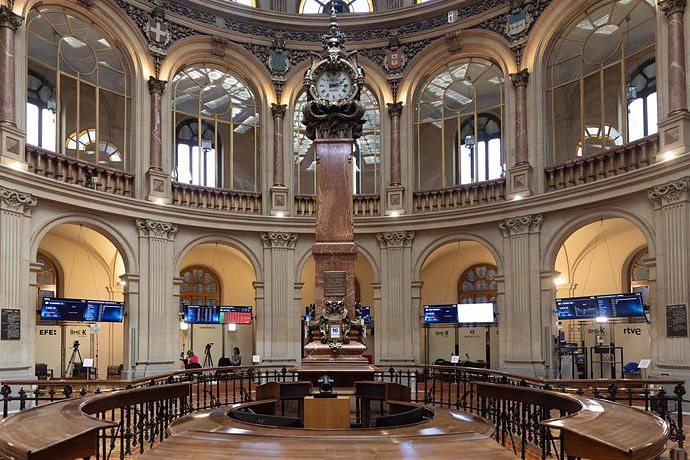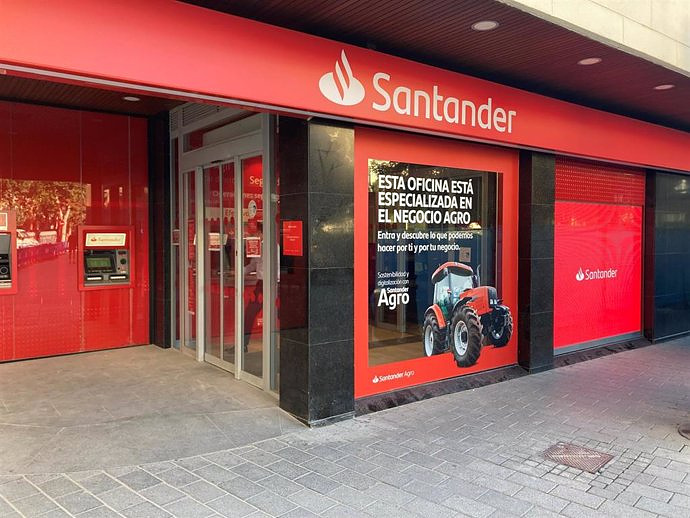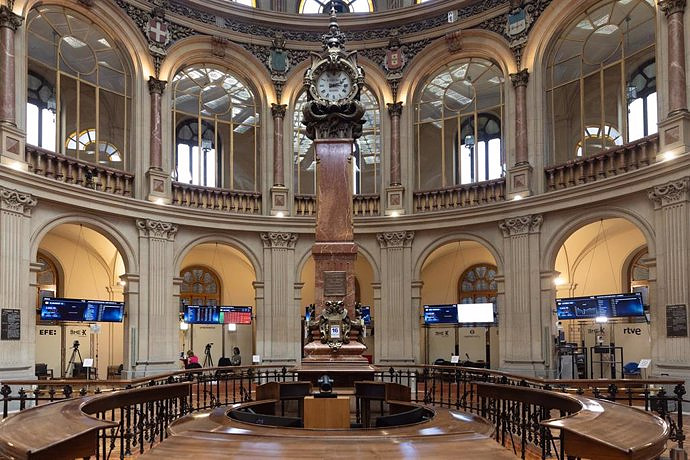61% of purchases correspond to EU countries
MADRID, 14 Jun. (EUROPA PRESS) -
Exports of coal, gas and oil have brought Russia income of 93,000 million euros in the first 100 days since the beginning of the invasion of Ukraine on February 24, according to estimates by the Research Center for Energy and Clean Air. (CREA), which attributes 61% of these purchases to the countries of the European Union (EU), with a bill of around 57,000 million.
In this way, hydrocarbon sales would be amply financing the Russian attack, since it is estimated that the cost of military operations for the Kremlin is around 840 million euros a day, when income from oil, gas and coal they report to the Russian coffers around 930 million euros per day, 10.7% more.
In its analysis, the 'think tank' indicates that the Twenty-seven assumed since the end of February 30% of Russian coal purchases and around 50% of oil, while they received approximately 75% of liquefied natural gas exports ( LNG) from Russia.
The main customers of fuels from Russia would be China, with a bill of 12,600 million euros; Germany, with 12.1 billion; Italy, with 7,800 million; the Netherlands, with 7.8 billion; Turkey, with 6.7 billion; Poland, with 4.4 billion; France, with 4,300 million; India, with 3.4 billion, and Belgium, with 2.6 billion.
In these first 100 days of war, the largest importers of Russian oil were China, the Netherlands, Italy and Germany; the largest importers of pipeline gas were Germany, Italy and Turkey; the largest importers of coal were Japan, the Netherlands, China and Taiwan; and the largest importers of LNG were France, Belgium, Japan and Spain.
However, those responsible for the study point out that import volumes fell modestly in May, around 15% compared to the period before the invasion, as many countries and companies rejected Russian supplies, although at the same time the rise in 60% of Russian export prices have generated a profit for the country.
Thus, despite the reduction in volumes in May, Russia achieved daily revenue of 883 million euros, below the average of 1.1 billion between January and February, but well above the 633 million per day entered in May. of 2021.
In relative terms, the most decisive countries in cutting Russian energy imports were the United States (-100%), Sweden (-99%), Lithuania (-77%), Egypt (-69%), Spain and Finland ( -56%).
However, countries such as India, France, China, the United Arab Emirates and Saudi Arabia increased their imports. Indeed, India became a major importer of Russian crude, buying 18% of the country's exports, although the authors note that a significant portion of the crude purchased from Russia is re-exported as refined petroleum products, including to the US. USA and Europe, which represents "an important loophole that must be closed".

 Exploring Cardano: Inner Workings and Advantages of this Cryptocurrency
Exploring Cardano: Inner Workings and Advantages of this Cryptocurrency Seville.- Economy.- Innova.- STSA inaugurates its new painting and sealing hangar in San Pablo, for 18 million
Seville.- Economy.- Innova.- STSA inaugurates its new painting and sealing hangar in San Pablo, for 18 million Innova.- More than 300 volunteers join the Andalucía Compromiso Digital network in one month to facilitate access to ICT
Innova.- More than 300 volunteers join the Andalucía Compromiso Digital network in one month to facilitate access to ICT Innova.-AMP.- Ayesa acquires 51% of Sadiel, which will create new technological engineering products and expand markets
Innova.-AMP.- Ayesa acquires 51% of Sadiel, which will create new technological engineering products and expand markets STATEMENT: The final convention in Courmayeur closed the Coppa Delle Alpi 2024
STATEMENT: The final convention in Courmayeur closed the Coppa Delle Alpi 2024 STATEMENT: Rainbow Robotics participates in ICRA 2024 in Yokohama, Japan
STATEMENT: Rainbow Robotics participates in ICRA 2024 in Yokohama, Japan Study identifies new genetic form of Alzheimer's
Study identifies new genetic form of Alzheimer's Judge Juan Merchan fines Trump for contempt of court in 'Stormy Daniels' bribery case
Judge Juan Merchan fines Trump for contempt of court in 'Stormy Daniels' bribery case How Blockchain in being used to shape the future
How Blockchain in being used to shape the future Not just BTC and ETH: Here Are Some More Interesting Coins Worth Focusing on
Not just BTC and ETH: Here Are Some More Interesting Coins Worth Focusing on UMH researchers are working on a high-quality apricot crop that requires less irrigation water
UMH researchers are working on a high-quality apricot crop that requires less irrigation water The UPV develops an application to improve the quality of life of patients with glioblastoma
The UPV develops an application to improve the quality of life of patients with glioblastoma A sensor system obtains the fingerprint of essential oils and detects if they have been adulterated
A sensor system obtains the fingerprint of essential oils and detects if they have been adulterated Faraday UPV presents the 'Origin' rocket to exceed 10 km of flight: "It is the beginning of the journey to space"
Faraday UPV presents the 'Origin' rocket to exceed 10 km of flight: "It is the beginning of the journey to space" A million people demonstrate in France against Macron's pension reform
A million people demonstrate in France against Macron's pension reform Russia launches several missiles against "critical infrastructure" in the city of Zaporizhia
Russia launches several missiles against "critical infrastructure" in the city of Zaporizhia A "procession" remembers the dead of the Calabria shipwreck as bodies continue to wash up on the shore
A "procession" remembers the dead of the Calabria shipwreck as bodies continue to wash up on the shore Prison sentences handed down for three prominent Hong Kong pro-democracy activists
Prison sentences handed down for three prominent Hong Kong pro-democracy activists ETH continues to leave trading platforms, Ethereum balance on exchanges lowest in 3 years
ETH continues to leave trading platforms, Ethereum balance on exchanges lowest in 3 years Investors invest $450 million in Consensys, Ethereum incubator now valued at $7 billion
Investors invest $450 million in Consensys, Ethereum incubator now valued at $7 billion Alchemy Integrates Ethereum L2 Product Starknet to Enhance Web3 Scalability at a Price 100x Lower Than L1 Fees
Alchemy Integrates Ethereum L2 Product Starknet to Enhance Web3 Scalability at a Price 100x Lower Than L1 Fees Mining Report: Bitcoin's Electricity Consumption Declines by 25% in Q1 2022
Mining Report: Bitcoin's Electricity Consumption Declines by 25% in Q1 2022 Oil-to-Bitcoin Mining Firm Crusoe Energy Systems Raised $505 Million
Oil-to-Bitcoin Mining Firm Crusoe Energy Systems Raised $505 Million Microbt reveals the latest Bitcoin mining rigs -- Machines produce up to 126 TH/s with custom 5nm chip design
Microbt reveals the latest Bitcoin mining rigs -- Machines produce up to 126 TH/s with custom 5nm chip design Bitcoin's Mining Difficulty Hits a Lifetime High, With More Than 90% of BTC Supply Issued
Bitcoin's Mining Difficulty Hits a Lifetime High, With More Than 90% of BTC Supply Issued The Biggest Movers are Near, EOS, and RUNE during Friday's Selloff
The Biggest Movers are Near, EOS, and RUNE during Friday's Selloff Global Markets Spooked by a Hawkish Fed and Covid, Stocks and Crypto Gain After Musk Buys Twitter
Global Markets Spooked by a Hawkish Fed and Covid, Stocks and Crypto Gain After Musk Buys Twitter Bitso to offset carbon emissions from the Trading Platform's ERC20, ETH, and BTC Transactions
Bitso to offset carbon emissions from the Trading Platform's ERC20, ETH, and BTC Transactions Draftkings Announces 2022 College Hoops NFT Selection for March Madness
Draftkings Announces 2022 College Hoops NFT Selection for March Madness




























